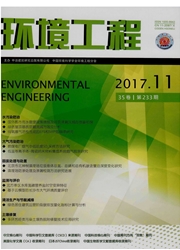

 中文摘要:
中文摘要:
重点考察了乙醇预发酵对餐厨垃圾甲烷发酵动力学的影响,并探讨了预发酵产生的乙醇作为甲烷发酵底物——"缓释乙酸"的可能性。结果表明:与一级动力学模型相比,修正的Gompertz模型更适合描述餐厨垃圾复杂底物的厌氧发酵体系。预发酵组最大产甲烷速率Rm比对照组高2.22倍,且T80(底物降解80%所需时长)和产气停滞期λ比对照组分别减少了1.67 d和0.64 d,表明乙醇预发酵可加快甲烷发酵的启动,显著提高底物降解速率和产甲烷速率。在单一碳源(乙醇、乙酸)的厌氧消化实验中,累积甲烷产率由高到低顺序为乙醇组(372 m L)〉乙酸组(155 m L)〉对照组(62 m L)。乙醇预发酵不仅可防止酸化,还能使乙醇起到"缓释乙酸"的作用,为甲烷菌提供足够的底物,从而显著提高餐厨垃圾甲烷发酵系统的稳定性。
 英文摘要:
英文摘要:
This paper investigated the effect of ethanol pre-fermentation on kinetics propety of methane fermentation of food waste,and explored the feasibility that ethanol could play the role of slow release acetic acid. The results showed that the modified Gompertz model was more suitable to describe the reaction than the first-order kinetics model. The maximum methane production rate( Rm) of the ethanol pre-fermentation group was 2. 22 times of the control group,and the T80 and lag phase time( λ) were reduced by 1. 67 d and 0. 64 d,respectively; and this indicated that ethanol pre-fermentation could improve the degradation rate of the substrate and accelerate the start of methane fermentation significantly. During the single carbon source( ethanol or acetic acid) experiments,the cumulative methane yield was in sequence of ethanol group( 372 m L) acetic acid group( 155 m L) control group( 62 m L). The ethanol pre-fermentation not only could prevent acidification,but also improved the stability of methane fermentation system of the food waste.
 同期刊论文项目
同期刊论文项目
 同项目期刊论文
同项目期刊论文
 期刊信息
期刊信息
